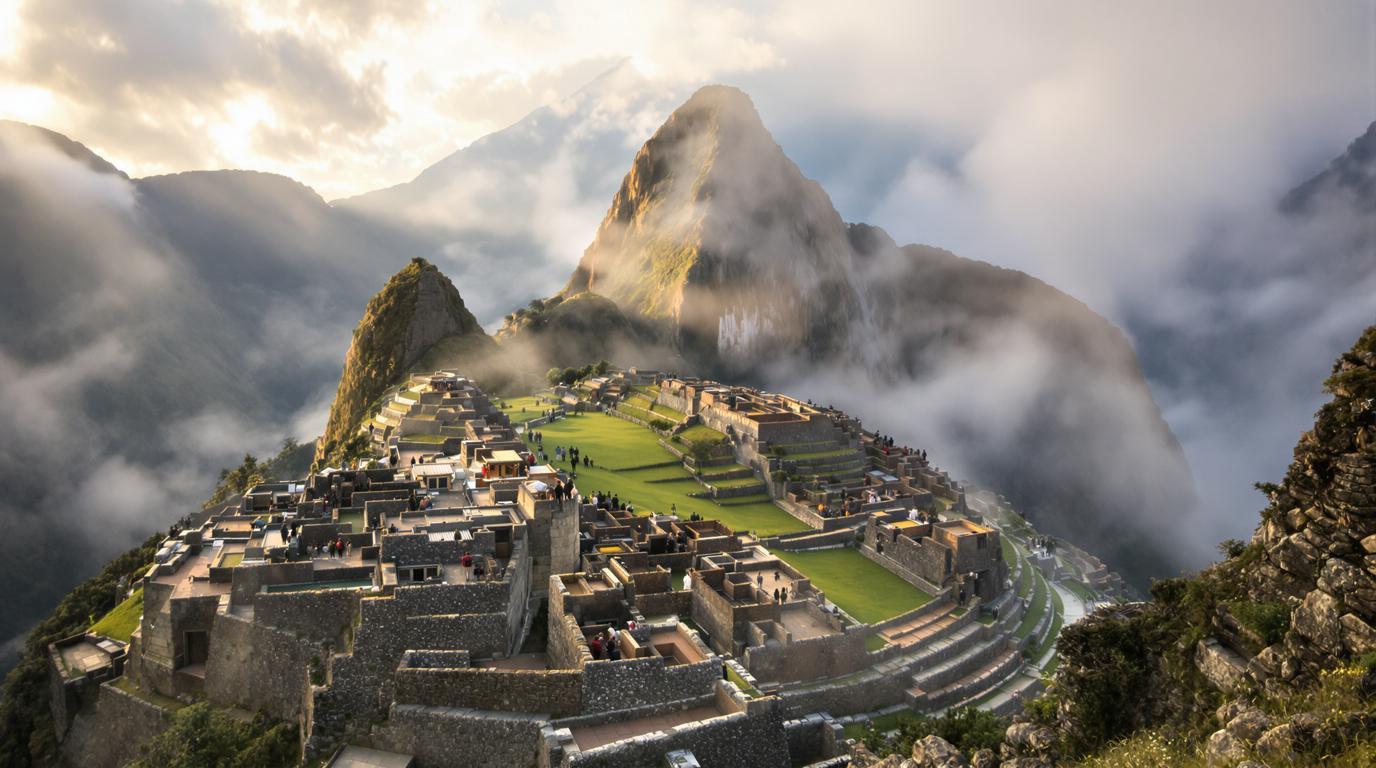Machu Picchu’s ancient stones have witnessed over 500 years of history, yet this Incan masterpiece still guards many secrets. While millions dream of visiting this wonder perched 7,970 feet above sea level, few truly understand the transformative experience that awaits in 2025’s carefully regulated environment.
The ancient city that survived Spanish conquest
Unlike other Incan treasures, Machu Picchu remained hidden from Spanish conquistadors, preserving its structures in remarkable condition. This 15th-century citadel features over 150 buildings arranged in a sophisticated urban plan that modern architects still study for its earthquake-resistant design.
“Machu Picchu represents the most extraordinary example of human ingenuity blending with natural landscape,” explains Dr. Elena Ramirez, Peruvian archaeologist specializing in Incan architecture. “The precision stonework has withstood five centuries without mortar.”
New visitor rules transform the experience in 2025
Gone are the days of unrestricted tourism. Peru now limits daily visitors to 4,500 (peak season) and implements mandatory guided tours with groups capped at 16 people. These changes create a more intimate experience while protecting the fragile site from degradation, though they require booking tickets months in advance.
The hidden temples few travelers discover
While most visitors focus on the main citadel, adventure seekers should explore the Temple of the Moon – a mysterious cave structure beneath Huayna Picchu mountain. This lesser-known wonder features some of the most intricate stonework in the complex, yet remains blissfully uncrowded even during peak hours.
Altitude challenges that catch visitors unprepared
At nearly 8,000 feet elevation, Machu Picchu sits lower than Cusco (11,152 feet), but still challenges unprepared visitors. Acclimatize gradually by spending 2-3 days in Cusco before visiting, staying hydrated, and considering local remedies like coca tea, used for centuries to combat altitude effects.
The golden hour that transforms stone into magic
Photographers cherish the first morning light (5:30-6:30 AM) when sunbeams dramatically illuminate the ancient stonework. From the Sun Gate at dawn, watch as golden light gradually reveals the citadel emerging from morning mist – a spiritual experience that explains why the Incas considered this mountain sacred.
Beyond Machu Picchu: extraordinary nearby treasures
Many travelers rush through Peru’s Sacred Valley, missing gems like Ollantaytambo with its massive agricultural terraces. Consider extending your journey with a visit to island vineyards or other remarkable heritage sites that complement the Machu Picchu experience.
Sustainable tourism transforming local communities
Peru’s strict visitation rules reflect a growing commitment to sustainable practices. Local cooperatives now offer authentic homestays in nearby villages, where travelers experience traditional Quechua culture while ensuring tourism dollars directly benefit indigenous communities.
“We’re seeing a fundamental shift from mass tourism toward quality experiences that preserve both our monument and our way of life,” notes Manuel Choqque, a community tourism coordinator from nearby Ollantaytambo.
The forgotten trail that rivals the famous Inca path
While the classic Inca Trail books out months in advance, the Salkantay Trek offers equally breathtaking scenery with fewer crowds. This alternative 5-day journey takes hikers through diverse ecosystems from alpine tundra to cloud forest before approaching Machu Picchu from a different angle that few experience.
Where to stay: from luxury lodges to authentic homestays
Accommodations range from $1,000/night glass-walled suites overlooking the Urubamba River to authentic stays for under $100. The Belmond Sanctuary Lodge remains the only hotel at the entrance to Machu Picchu itself, offering exclusive early and late access to the site when day-trippers have departed.
The unexpected weather pattern visitors must prepare for
Machu Picchu experiences microclimates that can deliver four seasons in a single day. Pack lightweight, waterproof layers and prepare for sudden shifts from brilliant sunshine to misty rain. This unpredictability creates dramatic photographic opportunities reminiscent of other photogenic islands with dramatic weather.
Machu Picchu transcends typical travel experiences, offering a profound connection to an ancient civilization that mastered both engineering and spiritual alignment with nature. The site’s careful preservation efforts ensure future generations can experience the same awe that strikes visitors when they first glimpse these perfect stone structures against impossibly green mountains. For those seeking deeper meaning in their journeys, these ancient stones whisper stories that resonate across centuries, changing how you understand human achievement and our relationship with the natural world.
